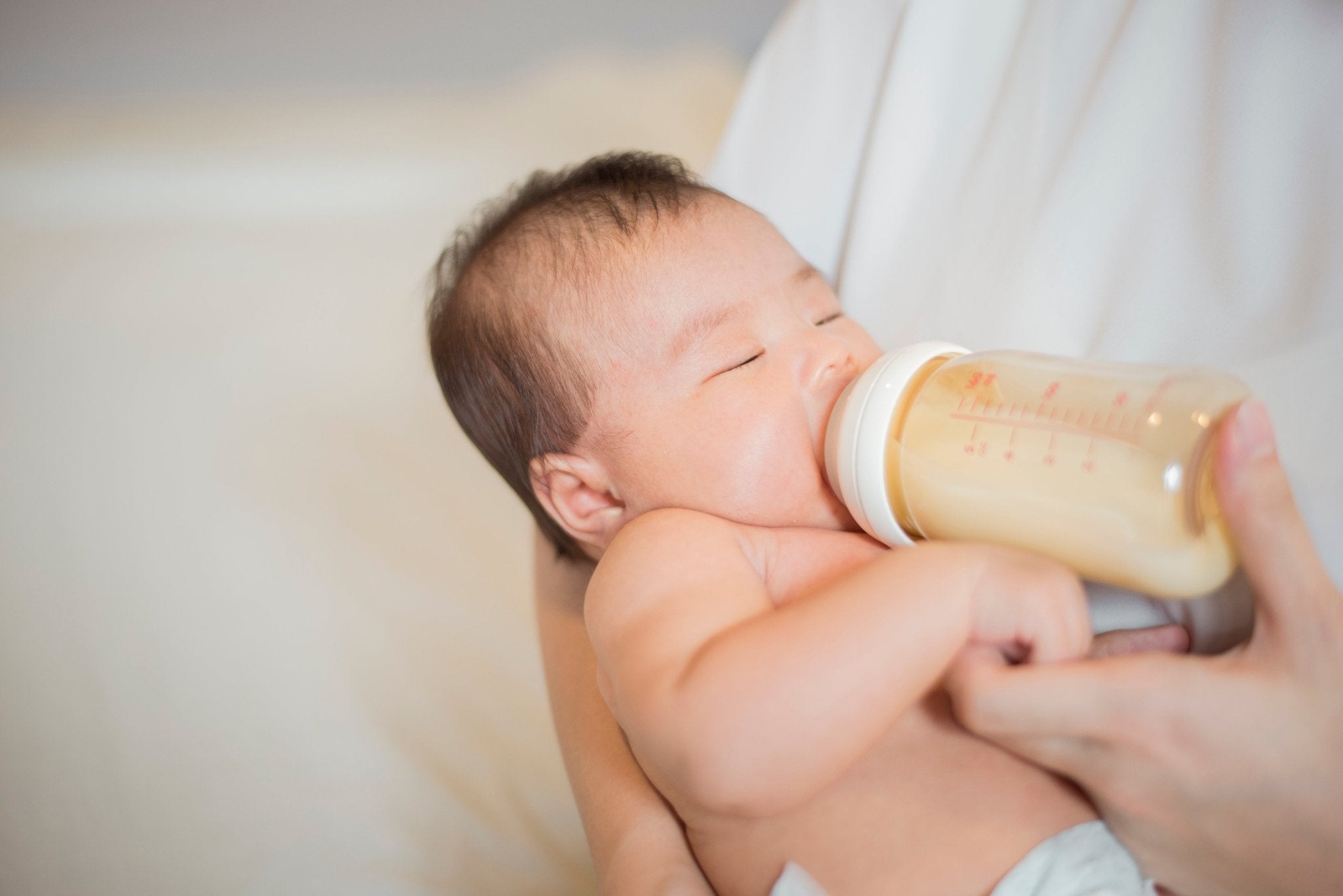
The search for a baby bottle can feel like hunting for a needle in a haystack. You want one that soothes feeding fusses and supports breastfeeding, pumping, and/or formula, never mind a bottle that matches baby’s fickle preferences!
Finding a bottle that works often takes some trial and error. Harbor’s infant care experts gathered the top three of their favorites, with tips for transitioning flow rates as baby grows.
1. Comotomo Baby Bottle
Why we love it: These soft, silicone bottles are a favorite among breastfed babies because they mimic the feel of nursing. The wide mound and slow-flow nipple make it an excellent option for babies who need a seamless breast-to-bottle transition.
Bonus points: Comotomo sells a sippy cup conversion kit. The familiar silicone design stays comfortable as baby makes the leap from bottle to spout, easing the transition and supporting their sipping skills.
2. Dr. Brown’s Options+ Anti-Colic Bottle
Why we love it: Renowned for its internal vent system, this bottle is a go-to for reducing gas and colic symptoms.
Bonus points: Dr. Brown’s sells soft-spout sippy options that fit onto existing bottles. The vent can also be removed, making this a versatile and wallet-friendly choice.
3. Boon NURSH Silicone Pouch Bottle
Why we love it: The Boon NURSH bottle features a revolutionary air-free feeding design with a 100% silicone pouch that collapses as your little one drinks, preventing colic symptoms like gas and spit-up. The silicone body can also be boiled, sterilized, microwaved, and even frozen.
Bonus points: Boon NURSH sells sippy spouts and a straw conversion top, allowing the bottle to adapt as baby grows. You can keep the same bottle base while introducing new drinking styles, making developmental transitions a breeze.
Transitioning bottle nipples
As baby grows, you’ll need to change the flow rate on their bottle. Newborns should start with slow-flow nipples. Once baby shows signs of frustration, like collapsing the nipple, sucking harder, or taking longer to feed, it’s probably time to move up a size! On the other hand, if baby is gulping, choking, or if they’re finishing too quickly, a smaller nipple may be better.
Keep in mind that each brand has different flow rate guidelines, so you’ll want to refer to the manufacturer’s recommendations for age-based transitions.
Transitioning to sippy cups
Most babies will transition to a sippy cup between 6 and 12 months. The American Academy of Pediatrics recommends starting the transition once baby can sit up and has begun to explore solid foods, typically around the 6-month mark. Sipping can support oral motor development, making this a great time to encourage baby to practice their sipping skills.
Keep your options open
Babies are notorious for changing their minds at a moment’s notice. A great way to test out different bottles without committing to one brand is to try a sample box. The Babylist Bottle Box includes five popular bottles so you can find your family’s perfect match before investing in a full set.
Finding the right bottle is an adventure, and we're here to support you every step of the way. Here’s to happier feeds and finding baby's perfect bottle, because let’s be honest—they deserve the best, and so do you!
Want more information on feeding?
Check out our other articles on all things infant feeding.
Adjusting your little one’s nighttime feeding schedule as they grow will support healthier sleep patterns for caregivers and baby alike. While you may want to respond to every nighttime wake-up with a bottle, spacing out feeds allows parents to get much-needed rest and teaches baby to self-soothe and, eventually, sleep through the night. Get more details on weaning those pesky overnight feeds.
How Feeding and Stomach Troubles Impact Sleep
Getting an infant to sleep well is challenging enough, but when babies struggle with feeding issues, tummy troubles, and gastrointestinal (GI) concerns, navigating sleep can be even more difficult. What makes it harder is that these topics are full of myths and misconceptions and tend to elicit unsolicited advice from well-meaning friends and family. Read for breakdowns on common misconceptions about infant bellies and sleep.
Written by: Shira Page, RN
Why Proper Burping can Help Baby Sleep
Whether nursing or bottle feeding, when babies drink they can swallow air. Gas and trapped air can contribute to digestive discomfort in babies, which can affect their sleep. Proper burping techniques can ensure that your little one remains comfortable and can get the restful sleep they need to thrive.
Understand why burping is important, how and when to do it, and the link between burping and sleep.
Cow's Milk Protein Allergy in Infants: Signs, Symptoms & Treatment | Expert Guide
Are you concerned your infant may have a cow’s milk allergy? Cow Milk Protein Allergy (CMPA) is a common yet perplexing condition that affects infants, leaving behind a trail of uncomfortable symptoms. Parents can understandably miss some of the signs and be in a difficult spot attempting to help their child. In this article, we explain the science behind CMPA, navigating the prevalence, decoding the signs and symptoms, and charting our course toward treatment options.
5 Most Common Types of Infant Formula and How to Choose
When it comes to choosing an infant formula, there’s never one right answer. There are dozens of brands with dozens of formulations. How do you choose and which can you trust? Understanding how each formula differs can guide your decision-making. Start by learning about popular brands, common formulations, and your baby’s unique nutritional needs.




